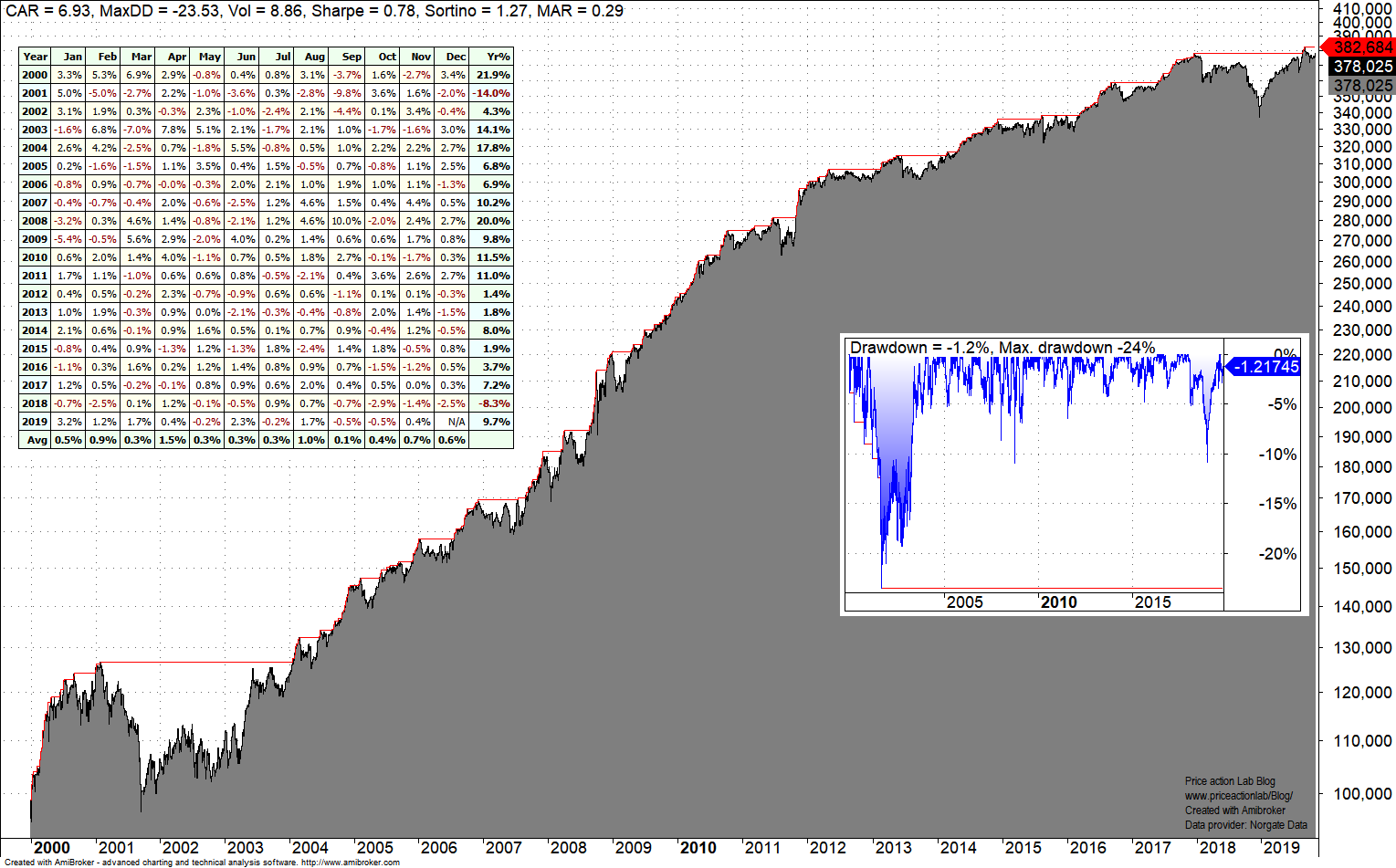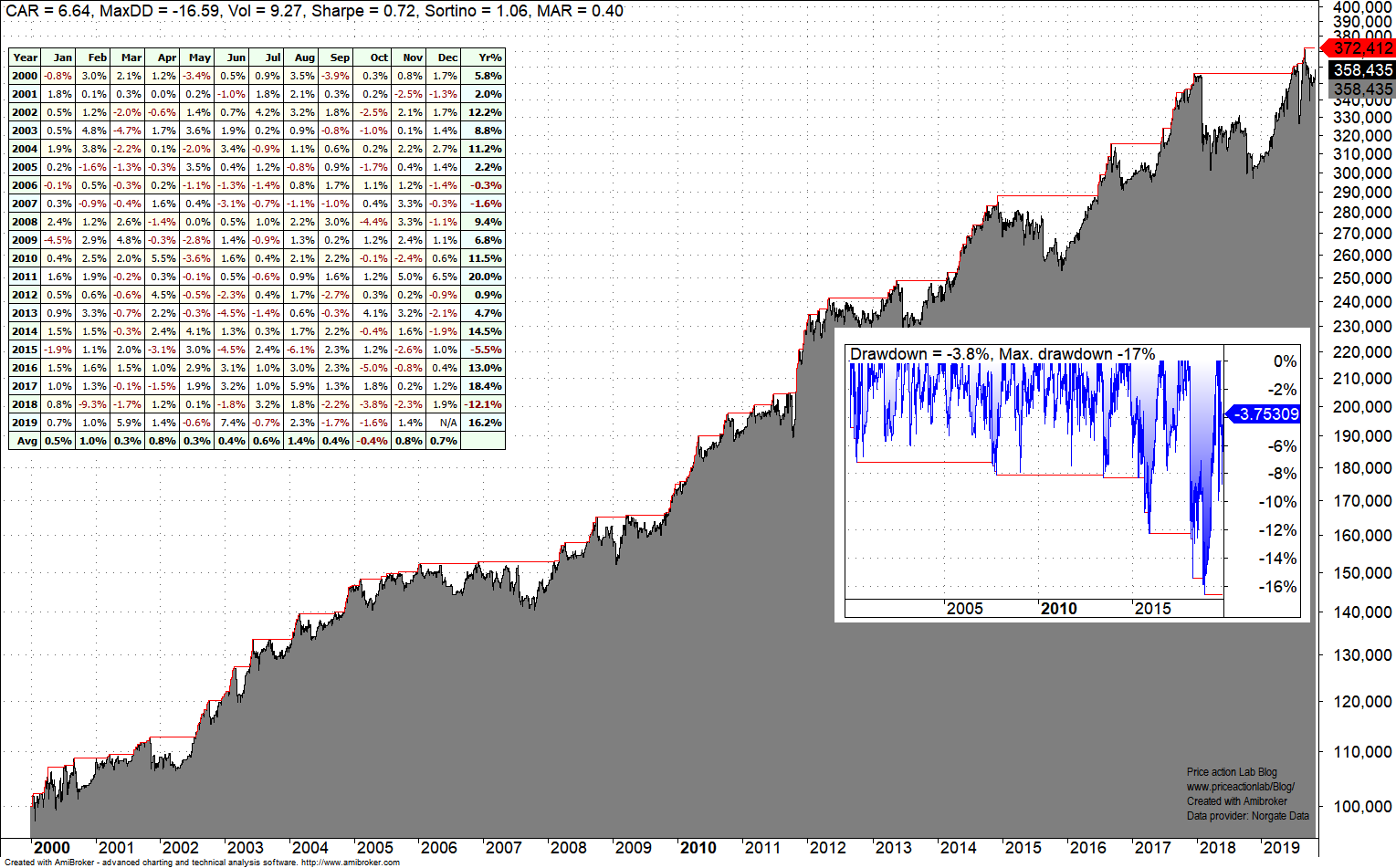The strategy trades four futures contracts in short-term mean-reversion mode based on a formula from a probability theory textbook.
The strategy trades long-only ES (E-mini S&P 500), ZN (10-Year U.S. T-Note), FESX (EURO STOXX 50) and FGBL (Euro-Bund) futures contracts using our PSI5 algo. This algo is based on a formula from a text in probability theory. The logic of this strategy is available for sale to professional traders and hedge funds only subject to acceptance of a non-disclosure agreement.
A maximum of four open positions are held at any given time. Note that this is not a data-mined strategy but it is based on a mathematical model of price action.
Strategy backtest settings
Strategy: Based on PSI5 algo
Time-frame: Daily (back adjusted futures data)
Strategy type: Mean-reversion, long-only
Contracts: ES, ZN, FGSX and FGBL
Backtest period: 01/03/2000 – 11/04/2019
Maximum open positions: 4
Commission per contract one way: $5
Initial capital: $100K
Position size : One contract or one contract per $100K of equity
Trade entry: Open of next bar (no look-ahead bias)
Stop-Loss: None or 7%
Correction filter: None or price > 200-day moving average
Backtest results
Case 1: Constant position size of one contract, no stop-loss, no correction filter
The strategy performs well during 2008 bear market and 2011 correction offering a degree of tail risk hedge for equities. Still maximum drawdown is higher than we would like and for this reason we implement a top-loss and correction filter below.
Case 2: One contract per $100K of equity, 7% stop-loss plus correction filter
The strategy performs well during 2008 bear market and 2011 correction while the drawdown profile has improved. Furthermore, CAGR is lower by only 0.3% as compared to the original strategy in Case 1.
The table below summarizes the performance of original and modified strategies.
| Parameter | Case 1 | Case 2 |
| CAGR | 6.9% | 6.6% |
| Max. DD | -23.5% | -16.6% |
| Sharpe | 0.78 | 0.72 |
| MAR (CAGR/Max. DD) | 0.30 | 0.40 |
| Win rate | 67.8% | 67.7% |
| Trades | 2978 | 2069 |
| Payoff | 0.65 | 0.61 |
| Avg. days in trades | 4.1 | 4.0 |
In Case 2, the strategy accepts higher drawdown during 2018 in exchange of a smother profile before that as compared to Case 1.
Note that returns are convex with respect to stock market for most part since there are profits in 2008 and 2011. In Case 2 there are also convex during the 2000 – 2003 bear market. Therefore, this strategy may serve as a good tail hedge for stock market investing besides a speculative vehicle.
The win rate in both cases is close to 68%. This high win rate of PSI5 algo in all markets minimizes probability of a large cumulative loss.
Stop-loss and correction filter can be adjusted to satisfy different risk criteria. In the article we included only our specific choice, 7% for the former and price > 200-day moving average for the latter.
The PSI5 algo works well across equities and futures. Click here for more articles.
Charting and backtesting program: Amibroker
Data provider: Norgate Data
Technical and quantitative analysis of major stock indexes and 34 popular ETFs are included in our Weekly Premium Reports. Market signals for position traders are offered by our premium Market Signals service
If you found this article interesting, you may follow this blog via RSS or Email, or in Twitter








